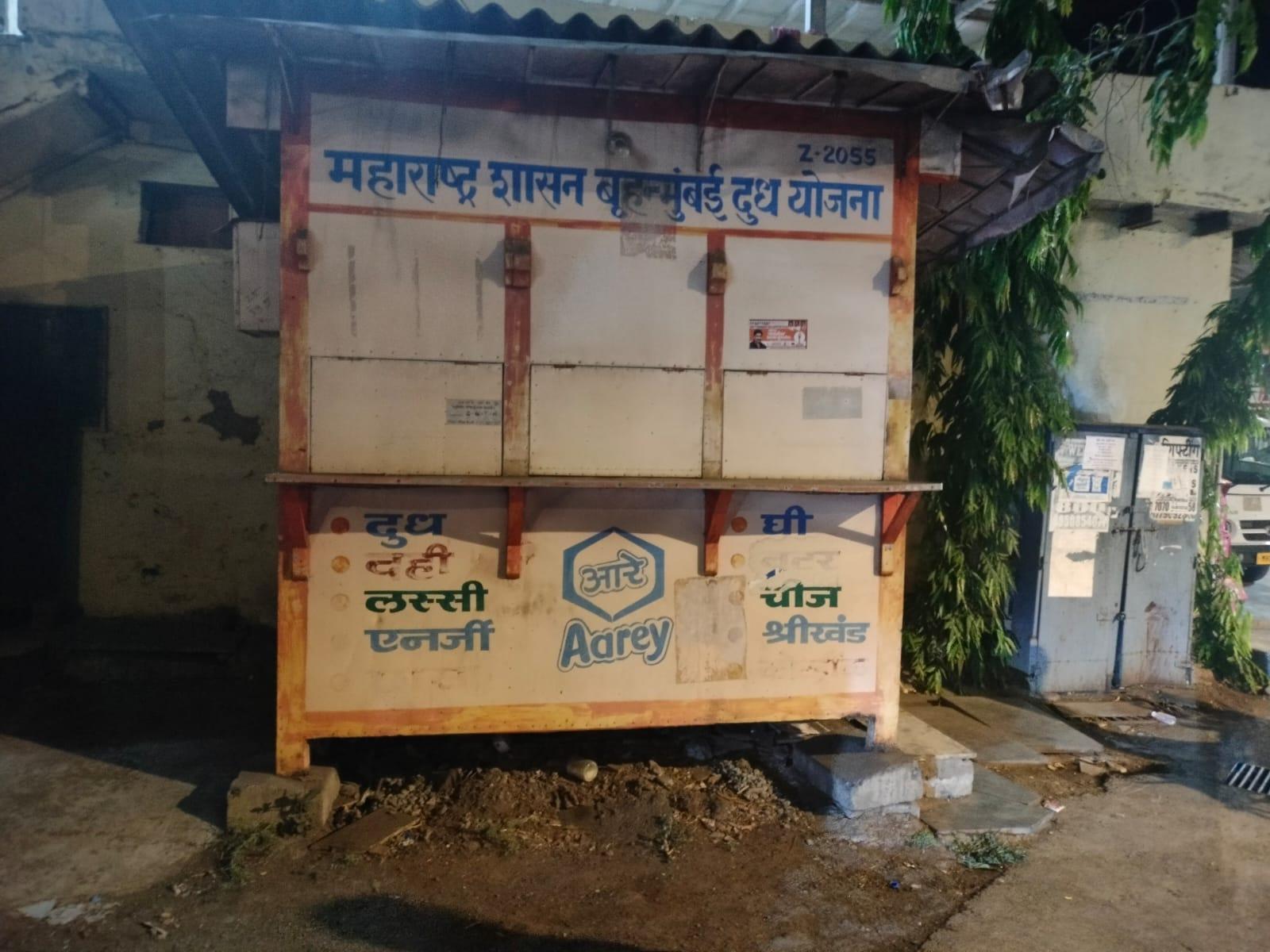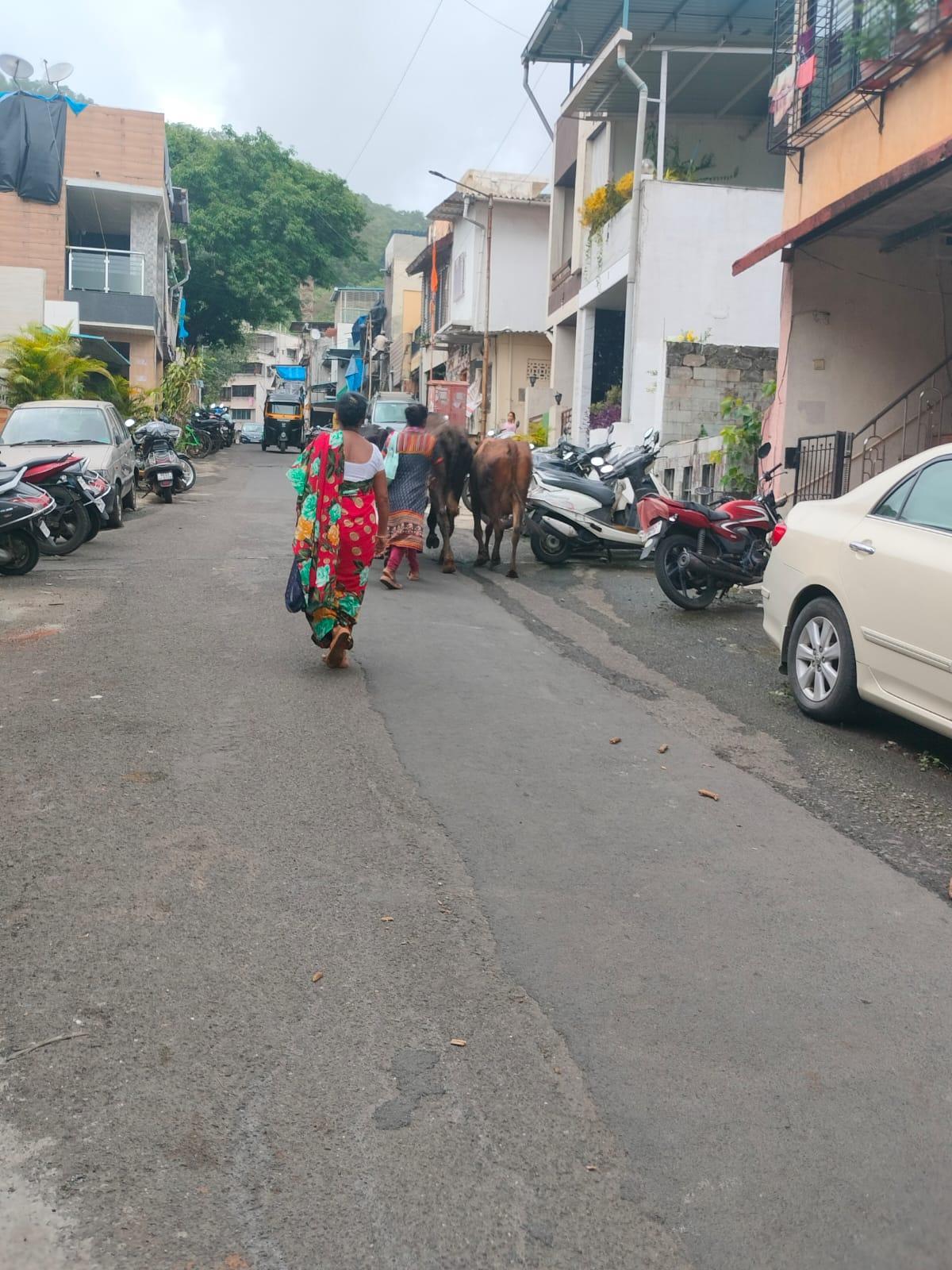MUMBAI SUBURBAN
Livestock & Fisheries
Last updated on 23 July 2025. Help us improve the information on this page by clicking on suggest edits or writing to us.
Livestock
Commonly Reared Livestock
Mumbai, with its unique blend of coastal and agricultural land, is home to some of the oldest communities in the region. These communities and their occupational history remain as pieces of the history of fishing, husbandry, and rearing that was once a prominent source of livelihood and economy in the land. Among these, the East Indians stand out as a group with a legacy dating back around 400 years. Alphi D’Souza, the founder of Mobai Gaothan Panchayat, highlights the agricultural roots of the East Indians, who were once predominantly engaged in farming and cattle rearing in the landscape of Salsette and Bombay.
Jersey, Dangi, Deoni, and Gir cows are the most commonly reared livestock within the region. With regards to buffaloes, Murrah buffaloes are usually reared. Rather than being an integral part of the farming system, the cows and buffaloes of Mumbai today are mostly reared as tablea (dairy cattle) and are supplied from states such as Haryana, Gujarat, Punjab, and Delhi.
Changing Practices in Livestock Rearing
When it comes to rearing cows and buffaloes, over time, there has been a notable evolution in livestock rearing practices, influenced significantly by technological advancements. Previously, methods like the “Gautha" involved tying up animals with chains and more, which led to stress. Today, there's a shift towards the method known as “mukta sankchar gauta," which allows the animals to move freely throughout the day, within the gaushalas and sheds, thus morphing the rearing patterns. Still, not all tabela or sheds follow this practice; this is usually practiced in gaushalas, which are rare within this landscape.
In terms of milking practices, earlier, hand milking posed risks such as pituitary gland injuries. Now, modern milking technologies such as milking machines efficiently extract milk within minutes, around 7 minutes per session.
To increase milk production, many methods have been employed over the years, often at the cost of the cattle’s health. Many usually use mineral and calcium mixtures that can be bought in markets to enhance milk production. The use of oxytocin injections, additionally, has been a subject of concern due to its potential side effects and residues in milk, impacting the health of consumers and the fertility of animals.
Dairy
The establishment of Aarey Milk Colony in 1949, envisioned by Dara N Khurody, marked a significant milestone in Mumbai's milk production sector. The Bombay Municipal Corporation Milk Supply Scheme was founded in November 1945 by the Government of Bombay to provide a regular milk supply to the city. The scheme intended to bring milk from Kaira District, located approximately 400 km from Bombay, and offer it at subsidized rates here. Every Mumbai home drank Aarey Milk at some point.
In 1949, when the northern suburbs of Bombay were still vast expanses of forests, farms, and villages, the Indian government allocated 1,300 hectares of forest known as Aarey to Bombay's dairy development board. Under the leadership of Khurody, the then milk commissioner, Aarey was transformed into Aarey Milk Colony (AMC), which revolutionized milk production and distribution in India. This public sector initiative aimed to provide pure and toned milk to the city's residents, addressing previous issues of hygiene, health risks, expenditure, and scarcity. As the demand for milk continued to grow, additional dairy plants were established by the State Government to meet the needs of the population.
The portion of land assigned in the forest became a specialized milk colony where sheds and dairy farmers resided. The colony was inaugurated in 1951 by Jawaharlal Nehru, the then Prime Minister. Para grass, a fodder, was grown within this land. This colony was the first of its kind, where “a total of 16,000 buffaloes from Mumbai were shifted to 30 cattle farms at Aarey Milk Colony. To enable the citizens to get the pasteurized milk, in the year 1951, Asia’s first dairy at Aarey was established.
The establishment of such a large-scale, government-operated dairy unit at Aarey represented a step towards modernization in milk production and distribution practices in India during that era. It set a precedent for subsequent dairy development initiatives across the country. According to the Scroll article, “with the establishment of the Bombay Milk Scheme at Aarey, milk began to be supplied from a centralised, government-run dairy unit to milk booths across the city. Every morning, people would line up in long queues outside their local Aarey booth to collect their daily supply of milk.

Milk supply has always been the biggest concern within the industry, where expenses and costs usually dominate over profit margins and revenue. To address this issue and increase the milk supply, Khurody introduced the concept of “toned milk" by reducing fat content and increasing the quantity through dilution with water and skim milk powder. This, in turn, made milk supply smoother and also made milk more affordable for consumers.
In the collective memory of Mumbai, before the advent of Operation Flood, Aarey became synonymous with milk production and a technological revolution. Residents would line up at the booth, they would buy milk, packaged in glass bottles, and then return these bottles. In the 1970s, schoolchildren frequently visited Aarey Milk Colony to observe the pasteurization and bottling processes. The colony featured state-of-the-art automation processes, marking a pioneering step in the milk industry's technological advancement. Later, with time, the milk was packaged in plastic thaelis.
With time, the booths expanded their offerings to include a variety of dairy products, introducing flavored milk, ghee, lassi, and other items. While today the milk from this dairy farm might not be bought in every Mumbai home, it still remains as one of the biggest suppliers of milk in BMC hospitals, although in around 2022, they discontinued the service for a while. As the dairy lies in the forests, the cattle still find their way back into farming in some form. The run-off water from these sheds flows into the agricultural lands of the adivasis who reside within the forests, where they serve as fertilizers.
Community-Owned Land for Pastures/Grazing
The district lacks pasture or land for grazing, posing a significant challenge for cattle rearing. However, people in the district have come together to develop a new practice which is unique and distinct in its way. In Mulund colony, the cows or bhes within this tabela are taken out every day to an area called Shastri Nagar, where they are tethered to a local mandir. Residents, as well as passersby, come together to participate in a form of collective care as they purchase and feed chaara, such as a peda made from the fodder by the dairy farmer/caretaker to the cattle. While they are not given or taken to pastures, this practice of grazing is special, blending religiosity, worship, and grazing in an increasingly urban space.
Tabelas are also very unique to the district. When it comes to areas that lie in the periphery of forests, hearing instances about human-animal conflict is inevitable. In Mulund West, near the proximity of the reserved forest area, stories of leopard man-eaters freely flow around. The most common prey of these leopards remains strays and the cows who reside within the local tabelas. Within the colony area, tabelas were specifically requested by the government to move to locations that lie in the Thane district.
This was done for reasons such as the health of the cows and buffaloes themselves residing within an increasingly urbanized and concretized landscape. Secondly, this was also done as no grazing spaces were remaining within the locality anymore. Moreover, cow pats littered on the roads reduced the cleanliness and aesthetic appeal of the area. After the constant objections, from 10-15, now only a few tabelas still exist within this region.

Veterinary Care
Cow vet hospitals, along with gaushalas, have increasingly receded in most areas in the suburbs. Still, the tabela walas say that accessibility to these doctors isn’t very hard or complicated. A series of symptoms have already been pre-explained to them, such as the blackleg and lumpy skin disease, which, if noticed, the farmers are asked to immediately notify the doctors.
Dairy farmers usually call private and government veterinary doctors or practitioners to treat the animals. Many of these doctors are located in the regions of Goregaon or are called from the Thane district.
Some of the veterinary services in the district include:
- Mumbai Veterinary College, Goregaon
- Utkarsh Hospital, Bhandup
- Superpets, Khar
Sources
Bombay Jules. 2013, April 25. Beautiful Aarey Milk Colony. Bombay Jules.https://bombayjules.blogspot.com/2013/04/bea…
Scroll.in. 2019, November 23. Years Before Tree-Cutting Protests, Aarey Milk Colony Was an Indian Welfare State Dream Project. Scroll.in.https://scroll.in/article/941964/years-befor…
Last updated on 23 July 2025. Help us improve the information on this page by clicking on suggest edits or writing to us.